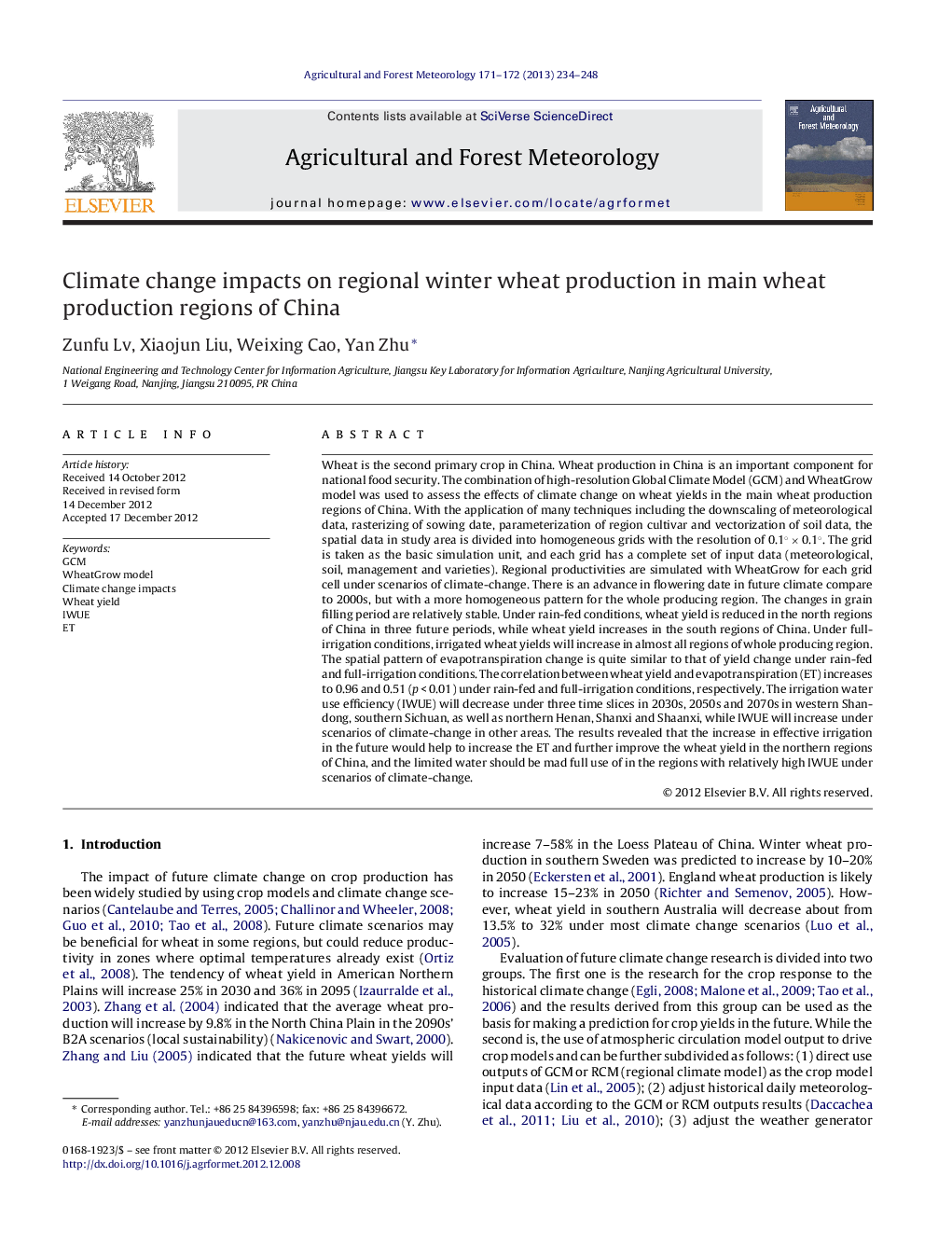| کد مقاله | کد نشریه | سال انتشار | مقاله انگلیسی | نسخه تمام متن |
|---|---|---|---|---|
| 81857 | 158354 | 2013 | 15 صفحه PDF | دانلود رایگان |

Wheat is the second primary crop in China. Wheat production in China is an important component for national food security. The combination of high-resolution Global Climate Model (GCM) and WheatGrow model was used to assess the effects of climate change on wheat yields in the main wheat production regions of China. With the application of many techniques including the downscaling of meteorological data, rasterizing of sowing date, parameterization of region cultivar and vectorization of soil data, the spatial data in study area is divided into homogeneous grids with the resolution of 0.1° × 0.1°. The grid is taken as the basic simulation unit, and each grid has a complete set of input data (meteorological, soil, management and varieties). Regional productivities are simulated with WheatGrow for each grid cell under scenarios of climate-change. There is an advance in flowering date in future climate compare to 2000s, but with a more homogeneous pattern for the whole producing region. The changes in grain filling period are relatively stable. Under rain-fed conditions, wheat yield is reduced in the north regions of China in three future periods, while wheat yield increases in the south regions of China. Under full-irrigation conditions, irrigated wheat yields will increase in almost all regions of whole producing region. The spatial pattern of evapotranspiration change is quite similar to that of yield change under rain-fed and full-irrigation conditions. The correlation between wheat yield and evapotranspiration (ET) increases to 0.96 and 0.51 (p < 0.01) under rain-fed and full-irrigation conditions, respectively. The irrigation water use efficiency (IWUE) will decrease under three time slices in 2030s, 2050s and 2070s in western Shandong, southern Sichuan, as well as northern Henan, Shanxi and Shaanxi, while IWUE will increase under scenarios of climate-change in other areas. The results revealed that the increase in effective irrigation in the future would help to increase the ET and further improve the wheat yield in the northern regions of China, and the limited water should be mad full use of in the regions with relatively high IWUE under scenarios of climate-change.
Simulated wheat yield (kg ha (1) in 2000s (A) and yield change in 2030s (B), 2050s (C), and 2070s (D) under three scenarios (A1: world markets, high-greenhouse-gas-emission scenario; A2: provincial enterprise, a medium-emission scenario; B1: global sustainability, a low-emissions scenario) of climate-change and rain-fed condition. Positive values in figure B–D means the reduced wheat yield compare to 2000s.Figure optionsDownload as PowerPoint slideHighlights
► The changes in the grain filling period are not main factor for yield reduction.
► Rain-fed wheat yields showed obvious differences between north and south China.
► The spatial pattern of ET change is quite similar to that of yield change.
Journal: Agricultural and Forest Meteorology - Volumes 171–172, 15 April 2013, Pages 234–248